Jaw Shaping in Selangor
Search and Compare the Best Clinics and Doctors at the Lowest Prices for Jaw Shaping in Selangor

Find the best clinics for Jaw Shaping in Selangor
With Medijump you can browse 1 facilities offering Jaw Shaping procedures in Selangor. The cheapest price available is $672 in Kuala Lumpur. And for the cheapest price globally, prices start from $672 in Malaysia.
Jaw Shaping in Malaysia
Price: $ 672
Jaw Shaping in Kuala Lumpur
Price: $ 672
Malaysia offers the best prices Worldwide
Price: $ 672
From 91 verified reviews
Zainuddin D, 07 September 2020
Great private sepcialist hospital
Compare Before & After Photos of _procedure_photos.phpJaw Shaping
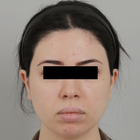
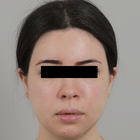
Front view

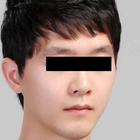
Front view
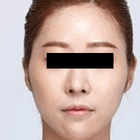
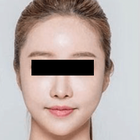
Front view
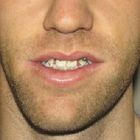

Front view
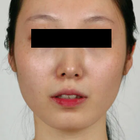
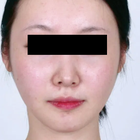
Front view
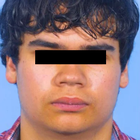
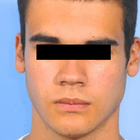
Front view

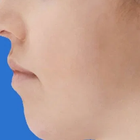
Full-side view
WHY US?
At Medijump, we're making medical easy. You can search, compare, discuss, and book your medical all in one place. We open the door to the best medical providers worldwide, saving you time and energy along the way, and it's all for FREE, no hidden fees, and no price markups guaranteed. So what are you waiting for?

Free

Best Price

Widest Selection

Risk-Free
What you need to know about Jaw Shaping in Selangor
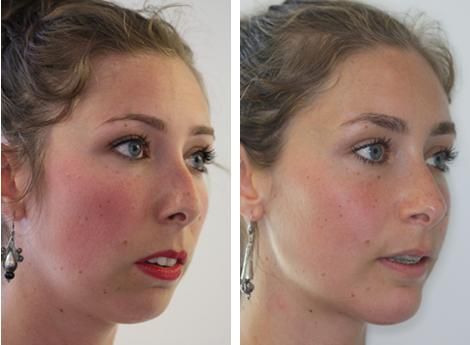
Also known as Mandibular Angle Reduction, V Line Surgery or Jawline Surgery, Jaw Shaping Surgery is performed with the purpose of narrowing the lower part of the face, with particular emphasis on the mandible (lower jaw) and the muscular attachments.
A wide jaw angle can be caused by enlarged muscle, bone, or a combination of the two. A prominent jaw angle or square jaw is considered a masculine trait, particularly in Asian countries. Therefore, many people opt for surgical correction to get their desired look. The surgery can shorten an overly long jaw and change a square-shaped face to an oval shape. Some people with temporomandibular joint (TMJ) disorders, uneven jaws, or jaws that causes pain when chewing might also undergo this surgery to correct pain.
There are several critical elements involved in the surgery, including the angles of the jaw, the body of the mandible, and the shape of the chin. While the procedure is typically performed on women with a square jawline who want a more feminine look, it can be done on both men and women. However, this procedure may not work for people who want to feminize a male’s face since males usually have a taller and longer face. Therefore, a V Line Surgery would only make a face look more elongated.
What does a Jaw Shaping Procedure Involve?
Various developmental, congenital, or some rare disorders such as acromegaly can cause enlarged mandibles, which can be corrected by Jawline Surgery. It is ideal for those with overly square or U-shaped jawline, overly manly jaw shape, bloated cheeks, and double chin. If you are considering V line surgery, you will need to be in a good state of physical and mental health.
Prior to the surgery, you will be examined by X-rays and 3D CT scans. Your surgeon will analyze and evaluate the overall structure of your jaw to create a plan to produce the desired result. You will also need to undergo medical tests such as ECGs to ensure that you don’t have a condition that may put you in danger or compromise the success of the surgery.
Surgery is performed under general anesthetic through tracheal intubation and leaves minimal scarring. You will need to fast for 8 hours before the surgery. Oscillating saws are used to reshape the jaw. The surgery can be performed inside the mouth (intraoral) or from outside the mouth (postauricular). The intraoral approach is the most widely used method. With this approach, an incision is made between the gum and the back of the cheek next to the jaw. Then, the jawline is carved out into their desired shape. A portion of the masseter muscle is shaved off, and the outer portion of the bone is chipped off. This approach is best for patients who aim to narrow their frontal view since the change is subtle and natural.
If the patient wants to change the appearance of the jaw angle from a side view, the overall contour of the bone will need to be changed. This means that the patient needs a full-thickness bone removal. Although it can be done through the intraoral approach, the surgeon’s view during this approach is very limited, which can decrease the precision of the procedure. Therefore, the best approach is from outside of the mouth or postauricular. To get direct access to the bone, the surgeon makes an incision hidden around the ear. This approach can remove a more substantial amount of bone. The recovery time using this approach is also much shorter than the intraoral approach since the swelling stays confined to the neck area.
How Long Should I Stay in Selangor for a Jaw Shaping Procedure?
The typical length of time for Jaw Shaping is usually around 2 hours. Nevertheless, you have to stay in the hospital for around one to two days for initial recovery where you will be monitored to make sure everything is fine. After being discharged, plan to stay in the Selangor for 10 to 14 days or until the surgeon says you can go home. The stitches are generally removed within two weeks after surgery, though this may vary from patient to patient.
What's the Recovery Time for Jaw Shaping Procedures in Selangor?
Immediately after the surgery, you will need to wear a facial mask that presses tightly against the skin around the jaw to keep the post-surgery swelling down. Also, you will not be allowed to eat foods that require chewing because it will delay the recovery and can cause bleeding. If you undergo the intraoral approach, your food intake will be limited for a considerable length of time. You may feel some swelling, numbness, and discomfort around the incision for several days, but the surgeon will prescribe medications to help with the pain.
The recovery period can be different for each individual; some people may be able to go back to their regular routines after seven to ten days, but others may need more time to fully recover. Avoid doing any vigorous activity that increases your blood pressure for several weeks, such as jogging and other exercises. Most of the visible signs, such as swelling and bruising, should disappear within a few weeks. Symptoms such as hematoma and infection are common, and will usually subside within three to six months post-surgery.
What sort of Aftercare is Required for Jaw Shaping Procedures in Selangor?
You must follow your surgeon aftercare instructions strictly to accelerate your recovery and minimalize possible complications. The instruction will likely include the following recommendations:
- Food intake. You may need to consume a liquid diet for a week after surgery as drinking your food is less painful and prevents trauma to the jaw area. You should be able to consume hard foods within one month.
- Oral hygiene. An antibacterial mouth rinse will keep your mouth and incision area clean, which will decrease the possibility of infection.
- Avoid tobacco and alcohol. Smoking and drinking alcohol should be avoided for a while.
- Keep the head elevated. You should keep your head elevated even when you are sleeping as it is the key to reduce swelling.
- Compression bandage. You are recommended to wear a compression bandage at all times for the first three days and while sleeping for the first week or two.
- Avoid strenuous activity. Do not do any heavy lifting or exercise for at least a month. However, do walk around and practice some gentle movement.
- Attend follow up appointments. The surgeon will check your progress to avoid any complications.
What's the Success Rate of Jaw Shaping Procedures in Selangor?
Jaw shaping surgery is a safe procedure when performed by a trained surgeon. Around 94% of patients express their satisfaction with this procedure. However, it is important to have realistic expectations. You should also be aware of the possible risks that this surgery may cause. These risks include infection, asymmetry, seroma, deep vein thrombosis, pulmonary embolism, and hematoma. Partial numbness of the jaw can also happen due to nerve damage.
Are there Alternatives to Jaw Shaping Procedures in Selangor?
If you wish to reshape your jaw but do not want to undergo surgery, there are non-invasive options available. The most popular alternatives are Botox and Dysport, which can effectively contour the jaw by relaxing the appearance of a square jaw. This procedure shrinks the masseter muscle by weakening it. These injectable can also be used to correct facial asymmetry around the jawline area. Since they are non-invasive, you can return to your daily activates right away and they offer a subtler shift in your appearance. However, these techniques are limited to cases in which the masseter is enlarged and may not work as well as V Line Surgery.
Whilst the information presented here has been accurately sourced and verified by a medical professional for its accuracy, it is still advised to consult with your doctor before pursuing a medical treatment at one of the listed medical providers
No Time?
Tell us what you're looking for and we'll reachout to the top clinics all at once
Enquire Now

Popular Procedures in Selangor
Prices Start From $70

Prices Start From $28

Prices Start From $1,945

Prices Start From $275

Recommended Medical Centers in Selangor for Jaw Shaping

- Interpreter services
- Translation service
- Religious facilities
- Medical records transfer
- Medical travel insurance
- Health insurance coordination
- TV in the room
- Safe in the room
- Phone in the room
- Private rooms for patients available

- Interpreter services
- Translation service
- Religious facilities
- Medical records transfer
- Medical travel insurance
- Health insurance coordination
- TV in the room
- Safe in the room
- Phone in the room
- Private rooms for patients available

- Interpreter services
- Translation service
- Religious facilities
- Medical records transfer
- Medical travel insurance
- Health insurance coordination
- TV in the room
- Safe in the room
- Phone in the room
- Private rooms for patients available

- Interpreter services
- Translation service
- Religious facilities
- Medical records transfer
- Medical travel insurance
- Health insurance coordination
- TV in the room
- Safe in the room
- Phone in the room
- Private rooms for patients available

- Interpreter services
- Translation service
- Religious facilities
- Medical records transfer
- Medical travel insurance
- Health insurance coordination
- TV in the room
- Safe in the room
- Phone in the room
- Private rooms for patients available

- Interpreter services
- Translation service
- Religious facilities
- Medical records transfer
- Medical travel insurance
- Health insurance coordination
- TV in the room
- Safe in the room
- Phone in the room
- Private rooms for patients available

- Interpreter services
- Translation service
- Religious facilities
- Medical records transfer
- Medical travel insurance
- Health insurance coordination
- TV in the room
- Safe in the room
- Phone in the room
- Private rooms for patients available

- Interpreter services
- Translation service
- Religious facilities
- Medical records transfer
- Medical travel insurance
- Health insurance coordination
- TV in the room
- Safe in the room
- Phone in the room
- Private rooms for patients available

- Interpreter services
- Translation service
- Religious facilities
- Medical records transfer
- Medical travel insurance
- Health insurance coordination
- TV in the room
- Safe in the room
- Phone in the room
- Private rooms for patients available

- Interpreter services
- Translation service
- Religious facilities
- Medical records transfer
- Medical travel insurance
- Health insurance coordination
- TV in the room
- Safe in the room
- Phone in the room
- Private rooms for patients available
Jaw Shaping in and around Selangor
About Selangor
Occupying the status of both the most populous and developed state, Selangor is indeed the pride of Malaysia. Its advanced infrastructure and superior living standards, coupled with the country's lowest instance of poverty, make it stand out. Perfectly positioned on the western coast of Peninsular Malaysia, it envelops Kuala Lumpur and Putrajaya, both of which were formerly a part of Selangor. Despite its impressive development marked by towering structures,
Selangor manages to retain its natural charm boasting splendid landscapes and tranquil retreats. The state's deep-rooted cultural essence and unmatched healthcare services further enhance its appeal.
Selangor is the medical tourists’ favorite destination because of its geographical position and low cost of living. The state has some of the best medical experts with 12 government hospitals and over 30 private hospitals and medical centers, many of which are recognized internationally and accredited by Joined Commission International and the Malaysia Society for Quality in Health (MSQH).
Selangor has become a preferred destination for medical tourists who seek procedures such as dental surgeries, cosmetic surgeries, IVF treatments, and eye surgeries. Among the numerous hospitals offering these procedures, KPJ Ampang Puteri and Sunfert International Fertility Centre have gained immense popularity due to their high standards and patient-centric approach. This underlines Selangor's standing as a leading destination for healthcare in the region.
Popular Areas in Selangor
Tourists who want to indulge in Selangor’s beautiful nature can go to Kuala Selangor Beach (Mirror of the Sky), Chilling Waterfalls, Kuala Selangor Nature Park, or the National Zoo of Malaysia. Those who want to experience culture can visit Galeri Diraja Sultan Abdul Aziz, Mah Meri Cultural Village, and Sultan Alam Shah Muzeum.
Among Selangor's numerous tourist magnets, Batu Caves stands out. This impressive limestone hill is home to three large caves and multiple smaller ones. Revered as a national treasure of Malaysia, Batu Caves hold immense religious significance for the Hindu community.
Visitors are always in awe of the world's tallest statue of the Hindu deity, Murugan, situated here. In addition to the religious and natural appeal, the site also offers sights of varied cave fauna and thrilling climbing routes, delivering an all-round enriching experience.
The state’s capital, Shah Alam, also has plenty to offer. Tourists can go to I-City to see millions of LED lights, indoor park, or to shop. The Blue Mosque (Sultan Salahuddin Abdul Aziz Shah Mosque) is also a popular destination where tourists can see the beautiful mix of Islamic and Malay architecture.
Weather and Climate in Selangor
Adorned with a tropical rainforest climate, Selangor is characterized by a warm and humid environment all year round. Daytime temperatures generally fluctuate between 25 - 35°C, but during the dry season, these can peak at a scorching 37°C.
The wet season ushers into the region as the calendar transitions into April, often extending as far as October, leaving the land generously watered. An increased intensity of rains is observed towards September and October, marking the peak of the rainy spell. For prospective visitors seeking to avoid the wet season, the months from late November to February typically prove the most comfortable for exploring and sightseeing, blessed with less rainfall and mild temperatures.
However, it should be remembered that even amidst the monsoon season, the weather isn't uniformly gloomy; there are often luminous intermissions. The sun tends to break through the rain-soaked clouds, bathing the land in its warm rays. Consequently, even during the monsoons, numerous days are well-lit, and visitors have ample opportunities to explore the local beauty undeterred. Brazil, in every season, has its unique appeal. Whether it's soaked in rain or draped in warm sunshine, it never fails to mesmerize its guests.
Getting Around in Selangor
There are two main airports: Kuala Lumpur International Airport (KLIA) and Subang Airport. Kuala Lumpur International Airport is the main airport in Malaysia that has a multitude of routes across the globe. The airport is divided into two parts, KLIA that mostly serves large airlines, and KLIA 2 that focuses on serving low-cost carries. Subang Airport is the hub for FireFly and Malindo Air.
Navigating Selangor is made effortless by its well-established infrastructure. The primary means of transportation include taxis, trains, and buses. Taxis, while economical, can prove to be slightly tricky, as some drivers refrain from using the fare meter. Visitors are therefore advised to approach taxi counters to secure a fixed-rate coupon, ensuring they aren't subjected to inflated prices.
Public transit systems like the KTM Komuter Train, MRT, and LRT are widely recognized as the most efficient modes of transportation for traversing Selangor. However, it's important to note that these service networks may not extend to certain rural areas. When visiting these less accessible regions, tourists may find it beneficial to hire a car, thereby gaining the advantage of flexibility. Alternatively, the option of using bus services provides a more economical solution for easy mobility.
Tourist Visas in Selangor
Nationals hailing from countries like China, India, Myanmar, Sri Lanka, Nepal, Bangladesh, Pakistan, Bhutan, Serbia, and Montenegro are required to secure a visa prior to their arrival in Malaysia. Meanwhile, most other nationalities are offered the convenience of visa-free entry, valid for either a 30-day or 90-day stay. It is crucial for all visitors, regardless of their country of origin, to hold a passport that remains valid for at least six months subsequent to their entry into Malaysia.
An online visa application platform or eVisa is available for selected foreign nationals. eVisa can be applied around the world except for Malaysia and Singapore. Tourists who wish to visit Malaysia for medical treatment can apply for an eVisa Medical, valid for a single journey with a maximum of 30 days. The Malaysian Government has a very strict visa regulation, overstaying will result in RM10.000 fine and/or 5 year’s imprisonment, do ensure to extend your tourist visa if you need to.
Additional Information
- Local Currency: Malaysian Ringgit is the local currency with 1USD equivalent to RM4.72. The currency is printed in various colors and sizes, making it easier and less confusing for travelers to work with the currency to avoid giving the wrong bills when shopping. The Malaysian Ringgit is formerly known as ‘Malaysian Dollar,’ older Malaysians sometimes refer to it as ‘Dollars,’ you can ask which dollar they mean if you are unsure.
- Money & Payments: ATMs are widely available in the state. Credit cards (MasterCard and Visa) are accepted in most hotels and established restaurants. Tipping is not a common culture and many restaurants already add a service charge onto the bills, but tourists may tip.
- Local Language: The national language is Malay, but English is in extensive use since many locals can speak English. Tamil, Mandarin, and Cantonese are also widely spoken.
- Local Culture and Religion: Many people from different ethnicity coexist in Selangor. Malay, Chinese, and Indians are among the biggest ones. The official religion is Islam, as in other parts of Malaysia; with 57.9% percent of the population is Muslim, followed by Buddhist, Hindu, Christian, and Taoism.
- Public Holiday: The rich racial diversity in Selangor is greatly celebrated all year round, especially on the holy days of every religion such as Aidilfitri, Chinese New Year, Thaipusam, and Deepavali. Selangor also hosts the three-day Thaipusam festival around January or early February, when hundreds of thousands of pilgrims meet at Batu Caves.
Popular Searches
- Plastic Surgery in Thailand
- Dental Implants in Thailand
- Hair Transplant in Thailand
- Breast Augmentation Thailand
- Gastric Sleeve in Thailand
- Gender Reassignment Surgery in Thailand
- Laser Hair Removal in Bangkok
- Botox in Bangkok
- Dermatology in Bangkok
- Breast Augmentation in Bangkok
- Coolsculpting in Bangkok
- Veneers in Turkey
- Hair Transplant in Turkey
- Rhinoplasty in Turkey
- Stem Cell Therapy in Mexico
- Rhinoplasty in Mexico
- Liposuction in Mexico
- Coolsculpting in Tijuana
- Rhinoplasty in Korea
- Scar Removal in Korea
- Gastric Sleeve in Turkey
- Bone Marrow Transplant in India
- Invisalign in Malaysia
- Plastic Surgery in the Dominican Republic
- Tummy Tuck in the Dominican Republic
- Plastic and Cosmetic Surgery in Poland
- Rhinoplasty in Poland
- Hair Implant in Poland
- Dental Implants in Poland
- IVF in Turkey
